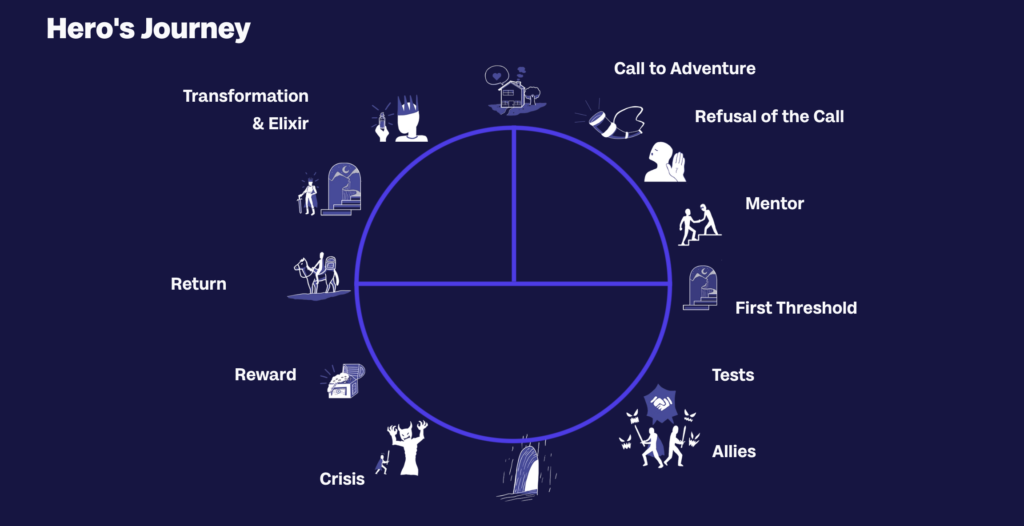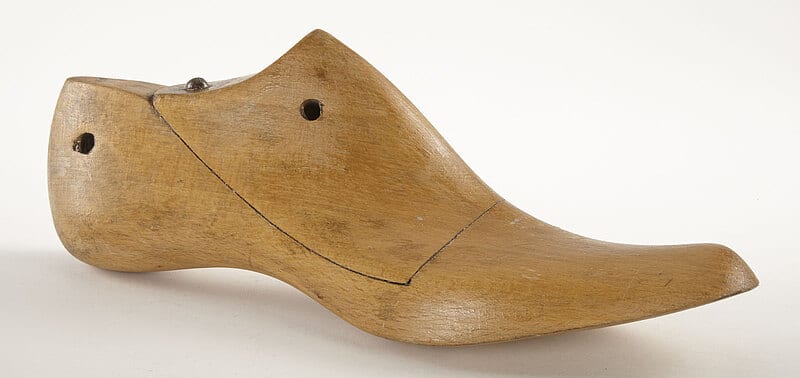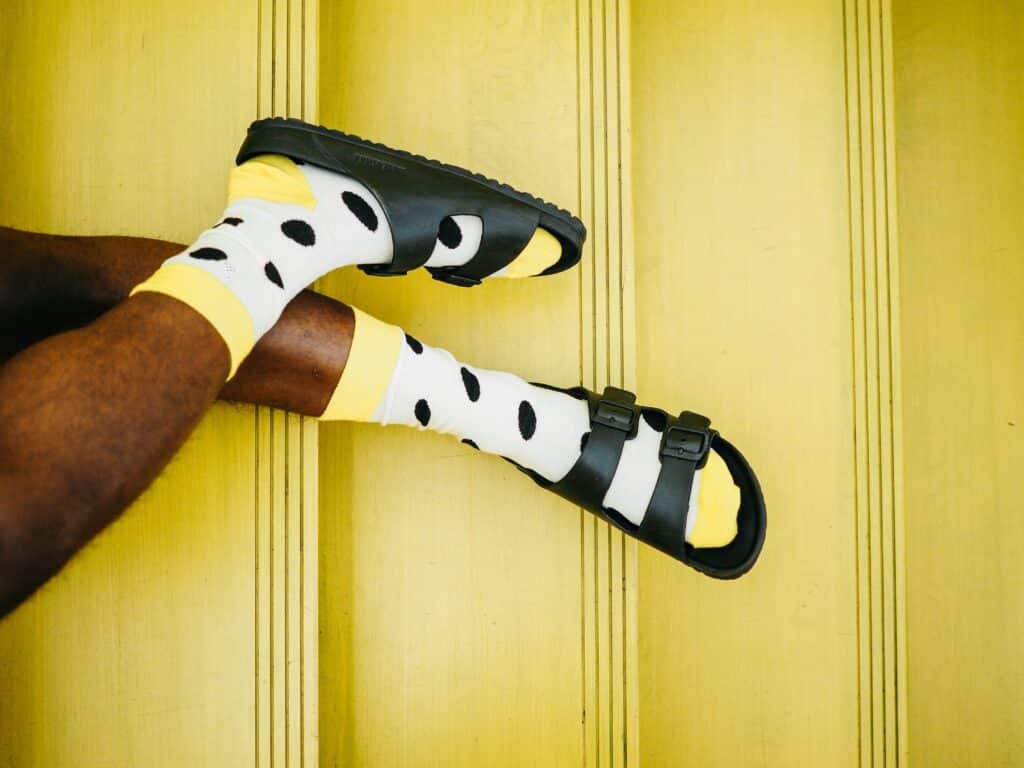Birkenstock’s Hero’s Journey: From the Blue Footbed to the Red Carpet
In the hit movie of the year “Barbie“, they are used as a synonym for the real world beyond the pink universe: No wonder, because for decades Birkenstock has been attracting independent free thinkers and defying the prevailing style norms.
But how did the German “health sandal” become so socially acceptable that it now appears on the red carpet of the Oscars in Hollywood? And what crises had to be overcome along the way? Immerse yourself in Birkenstock’s hero’s journey:

The Familiar World: Footwear for tough German Country Life
To find out more about the origins of Birkenstock’s hero’s journey, we travel back in time to the year 1774. Back then, rural life in Germany was characterized by harsh weather conditions. Clothing and footwear had to be correspondingly functional and robust. It’s hard for us to imagine today, but back then the majority of people only owned one pair of shoes, which had to be regularly mended and repaired.
This close bond between people and their footwear is even reflected in the dedication of a work by Johann Wolfgang von Goethe, who dedicated the poem “Hans Sachsen’s Poetic Mission” to his shoemaker.
The Call of the Hero: A New Target Group is Needed!
The Birkenstock family from Langen-Bergheim in Hesse is also mentioned for the first time at this time. Konrad Birkenstock’s heroic journey began with the opening of two shoe stores in Frankfurt in 1896: He sold special footbed insoles made of cork and latex, among other materials, which adapted to the shape of the foot. Although his invention, the “blue footbed”, was an innovation, it was not a commercial success.
After the First World War, Konrad Birkenstock sensed a new marketing opportunity and targeted soldiers who suffered from foot problems. At least in his home region, he managed to promote his design as a revolution in foot health.
A Hero’s Journey into the Unknown: The “Birkenstock System”
The heroic journey of Birkenstock takes its course: Convinced of the effectiveness of his insoles, Konrad Birkenstock was determined to make their benefits known beyond his home country. On a trip through Germany, Switzerland and Austria, he therefore gave specialist lectures on the “Birkenstock system”, the combination of handmade shoes and a flexible footbed. His efforts paid off, as sales of his deposits increased. He set up his first factory for mass production in Friedberg.
Despite initial reluctance on the part of the public, his ideas were increasingly accepted. Konrad was accompanied on his travels by his son Carl, who set up training courses on the “Birkenstock system” for shoemakers and salespeople so that they could offer the Birkenstock footbed in their stores.

Conflicts and Crises: The Rocky Road to the Ideal Shoe
Carl Birkenstock followed in his father’s footsteps – in the truest sense of the word – and optimized the previous designs, developing the “ideal shoe” in 1936, which was based on natural walking. But he was not prepared to compromise on production, which made it impossible to implement his ideas. When his technically-minded son Karl joined the company in 1954, a breath of fresh air finally emerged: in 1963, Birkenstock launched a sandal whose structure and construction reflected the Brutalist aesthetic of modern architecture.
Even Birkenstock’s heroic journey is not without its setbacks: However, as the current shoe fashion was characterized by stilettos, Karl’s sandal was not accepted by the mainstream. To market the shoe, Karl therefore turned to the healthcare industry and distributed free samples to doctors, which led to a flood of orders. The shoe was particularly popular in leisure and alternative circles, broke with convention and eventually became known as the “Madrid” model. Its design, based on natural materials and the unmistakable footbed, has remained virtually unchanged to this day.
The Breakthrough in the Mainstream: The Return of the Hero
Birkenstock always kept the focus on foot health, combining function and aesthetics without emulating mainstream fashion. In the 1980s and 1990s, the company was already selling abroad, primarily to the health sector and alternative scenes. But then something unexpected happened: photographers Kim Knot and Corinne Day presented Birkenstock models in fashion magazines, combining them with avant-garde fashion. This brought the shoes onto the catwalks worldwide, heralding a completely new era for Birkenstock ninety years after their creation.

German Shoemaking Tradition at the Oscars: The Birkenstock Legacy
“If we send a million ‘all-black Arizonas’ to New York, they’ll sell out in no time,” the current Birkenstock CEO Oliver Reichert told Vogue in 2018. Despite the high demand, the company remains true to its health-oriented approach and now produces sleep systems, including mattresses that adapt to the shape of the body, and even natural cosmetic products.
Another highlight in Birkenstock’s heroic journey was the Oscars, also in 2018, when Frances McDormand presented the winner of the “Best Actress” category – in bright yellow, tailored Birkenstocks from a collaboration with the fashion house Valentino.
The once German cork sandal now plays in the top league – a remarkable achievement when you consider how many setbacks Birkenstock’s history has been marked by. To this day, it is regarded as an inspiring example of brand development that combines tradition and innovation. The hero’s journey shows how a brand can build on its values to assert itself against trends and fashions – and thus even become mainstream itself.
There is also a fascinating story behind the Hugendubel brand, which Lisa will present as part of the 130th anniversary celebrations. The company told the story in a blog post. Have fun reading!
Share this article









